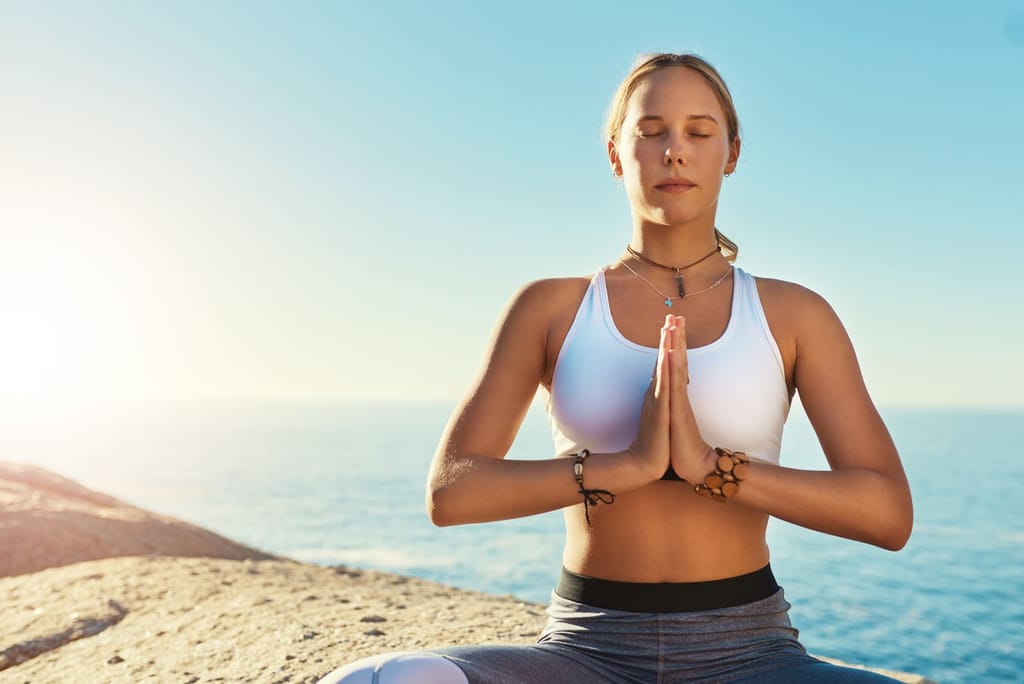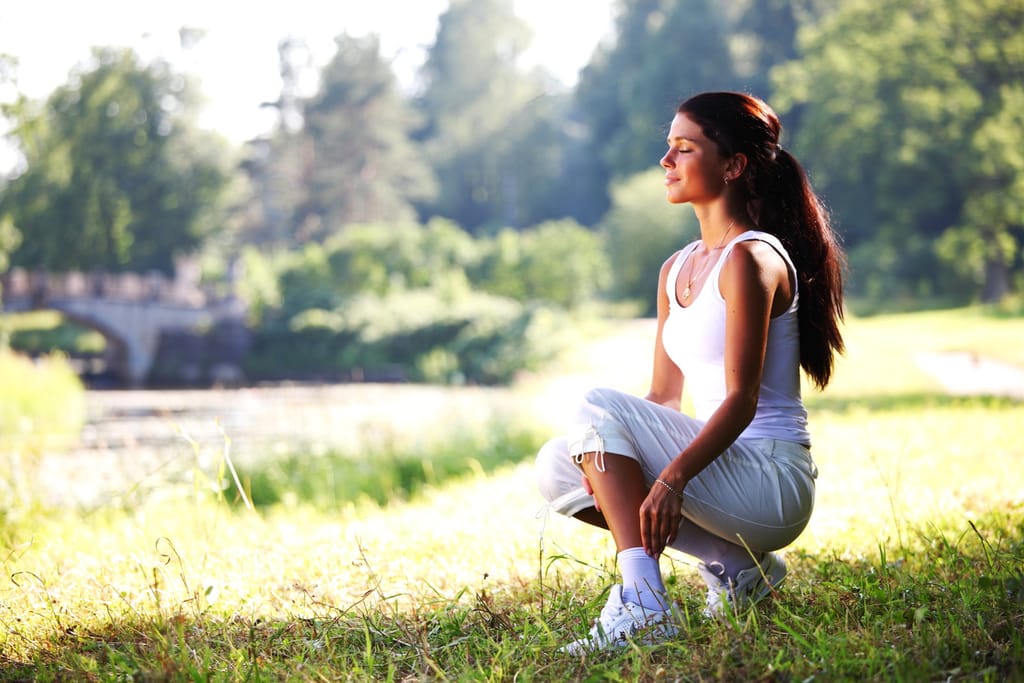What is yoga?
Yoga is an ancient practice with roots in India, and it involves physical, mental, and spiritual practices. It is a way of life that helps people to experience inner peace, greater physical health and mental clarity. Yoga is a holistic approach to living that focuses on balance and harmony in all aspects of life. It can help improve posture, reduce stress, improve flexibility, and cultivate mindfulness.

The History of Yoga
The history of yoga is a long and complex one, stretching back thousands of years.
Though its exact origins are uncertain, archaeological evidence suggests the practice of yoga has been around since at least the second century BCE. There is evidence that the practice predates its earliest written accounts, believed to be from the Upanishads, a set of texts from ancient India, written between 800 and 200 BCE. The Upanishads describe a type of physical and mental training, known as Raja Yoga, which involves postures, breath control, and meditation.
The Bhagavad Gita, a Hindu scripture written between the 5th and 2nd centuries BCE, is believed to be one of the earliest known texts to describe yoga. In it, the god Krishna instructs the warrior Arjuna in the principles of yoga, and in later chapters, its benefits and goals are discussed.
The Vedas influenced the practice of yoga; they are a collection of ancient Sanskrit texts thought to have been compiled between 1500 and 500 BCE. In the Vedas, the practice is described as a path to union with the divine, and they outline several yogic techniques. It took a philosophical turn in the 5th century BCE with the teachings of Patanjali, the creator of the Yoga Sutra, a guide to the practice of yoga. The Yoga Sutra outlines eight branches of yoga, known as the eight limbs of yoga, which are still practiced today.
The practice of yoga continued to grow over the centuries and was adapted by various cultures. In the 19th century, it was introduced to the West and has since become a popular form of exercise and relaxation. Today, it is practiced in many forms, from traditional Hatha yoga to more modern forms such as Vinyasa and Power yoga.

Benefits
Yoga is a practice that has been around for thousands of years and today is widely accepted as an effective form of exercise and stress relief. Yoga is a holistic practice, providing physical, mental and spiritual benefits.
Physically, yoga is a significant form of exercise. It promotes flexibility, strength, and balance. It gets the heart rate up and provides a cardiovascular benefit. It helps to tone and strengthen muscles and can help improve posture and balance. In addition, the practice can help reduce stress levels, improve digestion, and help to reduce chronic pain.
Mentally, yoga is a great way to reduce stress and relax. It helps to promote a sense of clarity and focus and can help to improve concentration. Practicing it can also help to reduce anxiety and depression and can help to improve self-image and self-esteem.
Spiritually, yoga is a great way to connect with your inner self and tap into the spiritual realm. It helps to bring awareness to the connection between mind, body, and spirit and can help to bring a sense of peace and understanding. It can also help to promote spiritual growth and lead to personal transformation and healing.
Poses for beginners
Yoga is an ancient practice that has been used for centuries to enhance physical and mental well-being. For beginners, it can intimidate to know where to start. To help you get started, here is a step-by-step guide to some of the most common yoga poses for beginners.
Mountain Pose: This pose is a significant starting point for any yoga practice. It is simple, yet powerful, and can help you cultivate your physical and mental balance. To do this pose, stand with your feet together, and your arms at your sides. Lift your chest, and relax your shoulders. Keep your chin parallel to the ground and focus your attention on a point in front of you. Hold the pose for up to one minute.
Cat-Cow Pose: This gentle pose is a great way to warm up your spine and release tension from your body. Begin on all fours, with your hands directly below your shoulders, and your knees directly below your hips. As you inhale, arch your back, and lift your chin and chest up towards the sky. As you exhale, reverse the motion, rounding your spine and pulling your belly button towards your spine. Continue to move with your breath for up to one minute.
Downward-Facing Dog: This classic yoga pose is a great way to stretch out your entire body. Begin on all fours, and then tuck your toes and lift your hips up towards the sky. Spread your fingers wide, and press firmly through your palms and the base of your toes. Relax your neck, and hold the pose for up to one minute.
Warrior I: This pose is a great way to build strength and stability. Begin in a standing position, and then step your left foot back about three feet. Bend your right knee and settle your hips down. Reach your arms up towards the sky, and focus your attention on a point in front of you. Hold the pose for up to one minute, and then switch sides.

Yoga and Meditation
Yoga and meditation are two powerful tools for achieving a deeper level of relaxation. Both are age-old practices that can help reduce stress, improve mental clarity and focus, and even improve physical health. In this article, we will look at how to use both yoga and meditation to reach a deeper level of relaxation.
Yoga is an ancient practice that has been around for centuries. It involves the physical practice of postures (asanas), breathing exercises (pranayama), and meditation. Through these practices, one can activate the body’s natural relaxation response and can help to reduce mental and physical stress. When practicing yoga, it is important to choose postures that foster relaxation. Postures such as forward bends, inversions, and restorative poses can help to activate the relaxation response. It is also important to focus on the breath and to make sure that it is deep and slow.
Meditation is a practice of focusing the mind on a single object or thought. This can help to calm the mind and body and to bring about a deeper level of relaxation. When meditating, it is important to find a comfortable and quiet place to sit. Begin by focusing on your breath and letting your thoughts come and go without judgment or attachment. If your mind wanders, bring your focus back to your breath.
Conclusion
Yoga is an ancient practice that has been around for centuries, and its benefits are well documented. It is a holistic approach to health and wellness that helps strengthen the body and the mind. We can use Yoga as exercise to reduce stress, increase flexibility, and improve overall physical, mental, and spiritual well-being.
Reference
- McLellan, L. (n.d.). Yoga for Beginners: A Complete Guide to get Started. Yoga Basics. https://www.yogabasics.com/practice/yoga-for-beginners/
- Nichols, H. (2021, April 15). How does yoga work? https://www.medicalnewstoday.com/articles/286745
- Upham, B. (2022, June 24). All About Yoga: Poses, Types, Benefits, and More. EverydayHealth.com. https://www.everydayhealth.com/yoga/